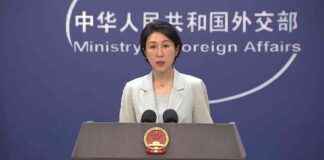The past few years have been challenging for China’s privately operated bus networks, with many systems facing mounting debts and declining traffic. This has led to the suspension of routes by multiple municipal public transport enterprises, some of which are now struggling to pay their employees due to financial constraints. Despite these difficulties, it is important not to overlook the significant achievements of the past decade, particularly the successful transition to new energy vehicles. China has emerged as a global leader in this field, with nine out of every ten new energy buses in the world operating on its streets and new energy models accounting for more than 80% of all buses in the country.
### The Early Adoption of New Energy Vehicles
The shift towards new energy vehicles by Chinese bus companies began as early as the 2000s but gained momentum in 2008 when China pledged to host a “Green Olympics” in Beijing. This commitment to sustainability set the stage for the widespread adoption of new energy buses and private vehicles in the country. The development of new energy technology received a significant boost after 2015, with advancements in battery efficiency and cost reduction driving further growth in the sector.
Despite the success of transitioning to new energy vehicles, bus companies have not been able to capitalize on this achievement financially. Many managers within these companies viewed themselves solely as buyers of new energy technologies rather than as key players in an emerging industry. This oversight has cost them the opportunity to leverage their market influence for greater profitability. By forming strategic partnerships and investing in battery suppliers like CATL in Fujian province, bus companies could have secured a more sustainable income from the burgeoning new energy vehicle industry. Unfortunately, the failure to do so has left many bus companies struggling to fund their operations as public funds dwindle.
### Exploring New Opportunities in Emerging Technologies
While the financial challenges facing Chinese bus companies are significant, there are still opportunities for them to thrive in the evolving landscape of the transportation industry. One such opportunity lies in battery recycling, as the lithium-ion batteries used in new energy vehicles have an estimated lifespan of around 10 years. Bus companies that made the early transition to electric vehicles are now reaching the end of their batteries’ life cycles, presenting a compelling case for proactive engagement in battery recycling. By becoming both clients and venture capital investors in this emerging market, bus companies can position themselves for long-term success in the industry.
Another promising avenue for bus companies to explore is the development of vehicle-to-grid (V2G) systems. New energy vehicles are not just consumers of electricity; they can also serve as mobile power banks through V2G technology. By enabling these vehicles to feed electricity back into the grid during periods of low usage and high demand, bus companies can play a crucial role in balancing energy consumption across the grid. Electric buses, in particular, are well-suited for this technology due to their fixed routes and schedules, making it easier for bus companies to negotiate mutually beneficial pricing arrangements with grid companies.
In addition to battery recycling and V2G systems, bus companies can also consider alternative energy sources like hydrogen. While hydrogen-powered buses remain costly compared to electric buses, there are opportunities for small-scale applications on longer routes and in regions with challenging environmental conditions. By investing in hydrogen technology, bus companies can diversify their energy sources and contribute to the development of the hydrogen vehicle industry in China.
### Seizing the Future of Public Transportation
The central challenge for Chinese bus operators is not just to survive the present but to seize the future by embracing emerging technologies and sustainable business practices. Rather than resorting to conventional cost-cutting measures, bus companies must position themselves as key players in an evolving ecosystem that integrates public transportation, energy grids, and innovative technologies. While there have been some initial steps in this direction, such as using retired bus batteries for energy storage and conducting tests on V2G systems, more concerted efforts are needed to drive sustainable growth in the industry.
As the financial pressures on bus companies continue to mount, the window of opportunity to act is narrowing. It is essential for bus operators to commit to a future that prioritizes sustainability, innovation, and strategic partnerships. By leveraging their expertise and influence in the transportation sector, bus companies can play a pivotal role in shaping the future of public transportation in China and beyond.

















